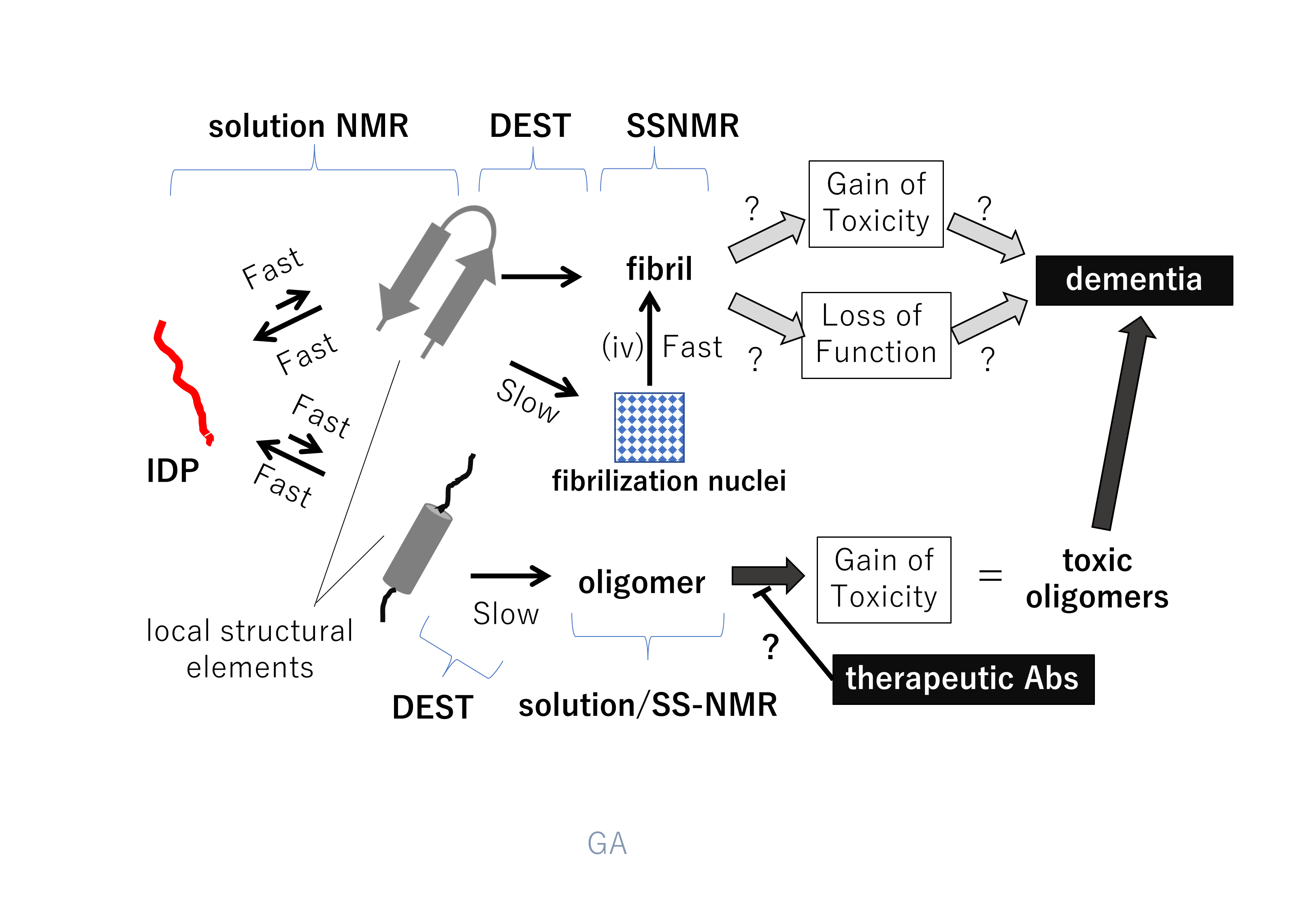1
"Molecular mechanisms of amyloid-β peptide fibril and oligomer formation: NMR-based challenges" by Hidekazu Hiroaki is published in BPPB as the J-STAGE Advance Publication.
2023 February 03 BPPB
A following article is published as the J-STAGE Advance Publication in "Biophysics and Physicobiology".
Hidekazu Hiroaki
"Molecular mechanisms of amyloid-β peptide fibril and oligomer formation: NMR-based challenges"
URL:https://doi.org/10.2142/biophysico.bppb-v20.0007
- Abstract
- To completely treat and ultimately prevent dementia, it is essential to elucidate its pathogenic mechanisms in detail. There are two major hypotheses for the pathogenesis of Alzheimer’s dementia: the β-amyloid (Aβ) hypothesis and the tau hypothesis. The modified amyloid hypothesis, which proposes that toxic oligomers rather than amyloid fibrils are the essential cause, has recently emerged. Aβ peptides [Aβ(1–40) and Aβ(1–42)] form highly insoluble aggregates in vivo and in vitro. These Aβ aggregates contain many polymorphisms, whereas Aβ peptides are intrinsically disordered in physiological aqueous solutions without any compact conformers. Over the last three decades, solid-state nuclear magnetic resonance (NMR) has greatly contributed to elucidating the structure of each polymorph, while solution NMR has revealed the dynamic nature of the transient conformations of the monomer. Moreover, several methods to investigate the aggregation process based on the observation of magnetization saturation transfer have also been developed. The complementary use of NMR methods with cryo-electron microscopy, which has rapidly matured, is expected to clarify the relationship between the amyloid and molecular pathology of Alzheimer’s dementia in the near future. This review article is an extended version of the Japanese article, Insights into the Mechanisms of Oligomerization/Fibrilization of Amyloid β Peptide from Nuclear Magnetic Resonance, published in SEIBUTSU BUTSURI Vol. 62, p.39-42 (2022).





